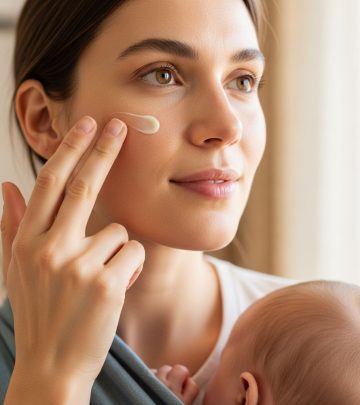How Often Should You Bathe a Newborn? Expert Guidelines for Modern Parents
Learn recommended newborn bathing practices, expert tips for keeping your baby clean, and how bath frequency impacts your newborn’s health and comfort.

How Often Should You Bathe a Newborn?
As a new parent, you might wonder just how frequently your newborn needs a bath. While daily bathing may seem intuitive, pediatricians and infant care experts actually recommend a much lower frequency for newborns. Excessive bathing can disrupt the delicate balance of newborn skin, potentially causing dryness or irritation. This guide explains current expert recommendations, why less can be more when it comes to baby bath time, and essential hygiene tips to help your little one stay healthy between baths.
We’ll cover when to give your baby’s first bath, the ideal frequency, how to maintain hygiene between baths, and best practices for a stress-free experience.
Table of Contents
- How Often Should You Bathe a Newborn?
- Timing Baby’s First Bath
- Keeping Baby Clean Between Baths
- Step-by-Step Bathing Guide
- Bath Safety Tips
- Is Morning or Night Best?
- Caring for Your Baby’s Skin
- Frequently Asked Questions
How Often Should You Bathe a Newborn?
Pediatric experts consistently recommend up to three baths per week for newborns once their umbilical cord stump has fallen off. Daily baths are not typically necessary for infants, whose skin is still developing and susceptible to dryness.
According to the American Academy of Pediatrics (AAP) and leading pediatricians, the norm of daily infant bathing is based more on cultural habits than medical necessity. In fact, less frequent baths help preserve the natural oils that protect your baby’s skin.
Key Recommendations:
- After the umbilical cord stump falls off, bathe your baby up to three times a week if desired. Fewer baths are fine if baby remains clean and comfortable.
- Sponge baths should be used before the cord stump detaches to prevent infection and promote healing.
- Daily spot-cleaning of the face, hands, neck, and diaper area keeps baby fresh without overbathing.
Timing Baby’s First Bath
The World Health Organization (WHO) and most pediatric associations recommend delaying newborns’ first bath for at least 24 hours after birth (or a minimum of 6 hours if circumstances require earlier bathing). This delay offers significant health benefits for newborns:
- Reduced risk of hypothermia and hypoglycemia: Immediate bathing can cause a drop in body temperature and blood sugar levels.
- Improved breastfeeding outcomes: Babies bathed shortly after birth may be less alert and less interested in feeding, as stress hormones can make them cranky or drowsy.
- Supports skin adaptation: Newborns shed multiple layers of skin in the first week; delaying the bath helps their skin adjust smoothly to the new environment.
When you do bathe your baby for the first time, be gentle and consider making it a calm, unrushed experience to help them adjust to the new routine.
Keeping Baby Clean Between Baths
Even though newborns don’t need frequent full-body bathing, maintaining hygiene is essential for their health and comfort. Focus on spot cleaning the areas most prone to messes and irritation:
- Face and neck: Wipe gently with a soft, damp cloth after feedings and when drool or spit-up occurs.
- Hands and feet: Clean whenever visibly dirty, especially after diaper changes or if baby grasps objects.
- Diaper area: Always clean the genitals and bottom thoroughly after each diaper change.
- Skin folds: In armpits, groin, behind knees, and under the chin, check regularly for moisture or buildup, and wipe with a damp cloth if needed.
This approach (sometimes called “topping and tailing”) keeps baby clean while minimizing skin irritation from excessive soap or water exposure.
Step-by-Step Bathing Guide for Newborns
The first few baths will be a learning experience for you and baby. To make the process stress-free and safe, follow this expert-approved routine:
- Prepare supplies: Gather a small infant bathtub or basin, soft washcloths, cotton balls, mild baby soap (optional), clean towels, and fresh clothes or diaper.
- Warm the room: Make sure the bath area is comfortably warm (around 75-80°F/24-27°C) to prevent chilling.
- Fill the tub: Use just a few inches of warm water (about 2-3 inches high; 37°C/98.6°F).
- Gently undress baby: Hold your baby securely and place them in the tub feet first, keeping one hand supporting their head and neck.
- Wash gently: Use a soft, damp washcloth with water (and a tiny amount of mild soap if desired) to clean the baby from top to bottom.
- Clean diaper area last: To avoid spreading bacteria, always clean the diaper area last, rinsing the cloth well beforehand.
- Dry and dress: Wrap baby in a soft towel, pat dry (especially in skin folds), and quickly dress to keep them warm.
Bath Safety Tips
- Never leave your baby unattended in the bath—even for a second.
- Test water temperature with your wrist or elbow before placing baby in the tub; it should feel comfortably warm, not hot.
- Keep all bathing supplies within arm’s reach so you can focus on your baby at all times.
- Use non-slip mats or pads in the bath or on the floor to prevent accidents.
- Limit bath time to 5–10 minutes to avoid chilling and maintain skin integrity.
Is Morning or Night Best for Bath Time?
There is no medically preferred time of day to bathe your baby. The best time depends on your family’s schedule and your baby’s temperament. Consider these options:
| Time of Bath | Benefits |
|---|---|
| Morning | Ideal if baby is more alert and happy, usually less rushed. |
| Evening | Can be a calming part of bedtime routine, helps baby wind down. |
If bathing after a feeding, wait for about 30 minutes so your baby’s tummy can settle.
Caring for Your Baby’s Skin
Newborn skin is particularly delicate. Overbathing, scrubbing, or using harsh products can strip away natural oils and aggravate dryness or eczema. Maintain healthy skin by:
- Using mild, fragrance-free baby soaps and shampoos sparingly.
- Avoiding adult cleansers, bubble baths, and scented lotions.
- Patting—never rubbing—skin dry after baths.
- Applying a gentle, chemical-free baby moisturizer if skin is dry, focusing on key areas but avoiding overuse.
- Washing baby clothes with unscented, hypoallergenic detergent.
If you notice persistent dryness, rashes, or other skin concerns, consult your pediatrician promptly for tailored advice.
Frequently Asked Questions (FAQs)
Q: Why are daily baths discouraged for newborns?
A: Daily baths can remove natural oils, causing dry skin and potential irritation. Three times a week is generally sufficient for hygiene and comfort.
Q: What kind of soap is best for my newborn?
A: Use a mild, fragrance-free baby soap or none at all for most baths. Avoid adult products and anything containing dyes or strong chemicals.
Q: Is it bad if my baby only gets one bath a week?
A: Not at all—some babies only need one bath per week, especially if their skin is healthy and you do regular spot-cleans.
Q: When can I start giving my baby a bath in the tub instead of sponge baths?
A: Once the umbilical cord stump has completely fallen off and the area has healed, you may switch to regular tub baths.
Q: How long should a newborn bath last?
A: Limit baths to 5-10 minutes to prevent chilling and protect skin.
Q: How do I clean my baby after diaper blowouts or spit-up between baths?
A: Gently wipe affected areas with a clean, damp washcloth. Use gentle diaper wipes for the bottom if needed, and ensure all folds are dry after cleaning.
Expert Sources and Further Reading
- American Academy of Pediatrics Guidelines
- World Health Organization (WHO) recommendations on newborn baths
- Mayo Clinic: Baby Bath Basics
- HealthyChildren.org: Bathing Your Baby
- Parenting experts and lactation specialists
Remember: Every baby is different! Feel free to adapt these guidelines according to your baby’s individual needs, skin health, and family routines. When in doubt, consult your pediatrician for personalized advice.












